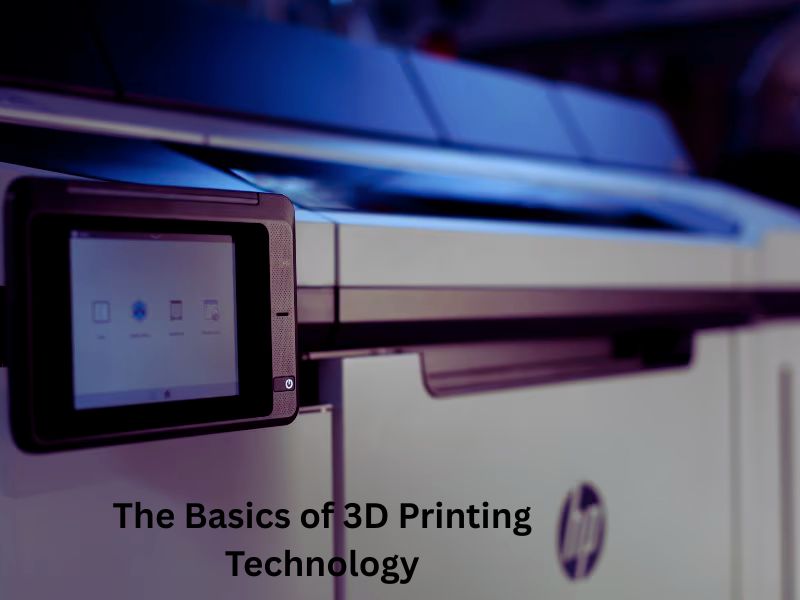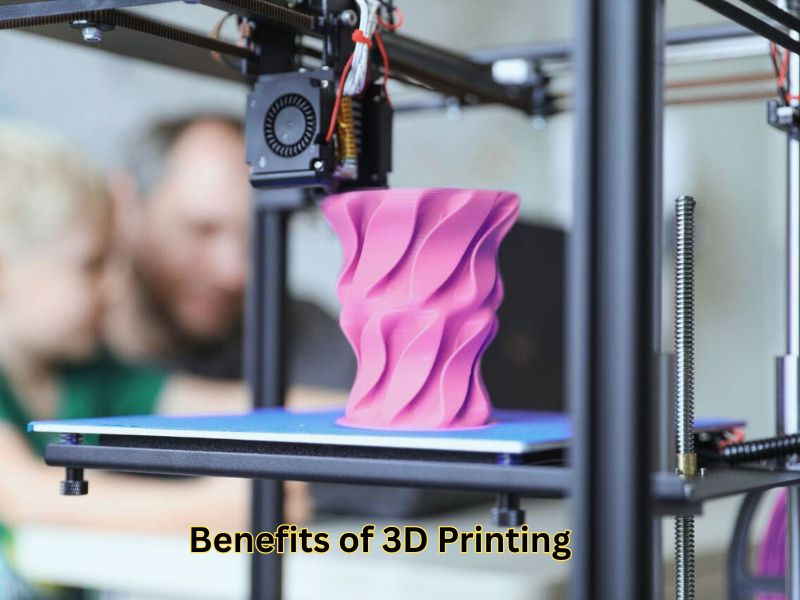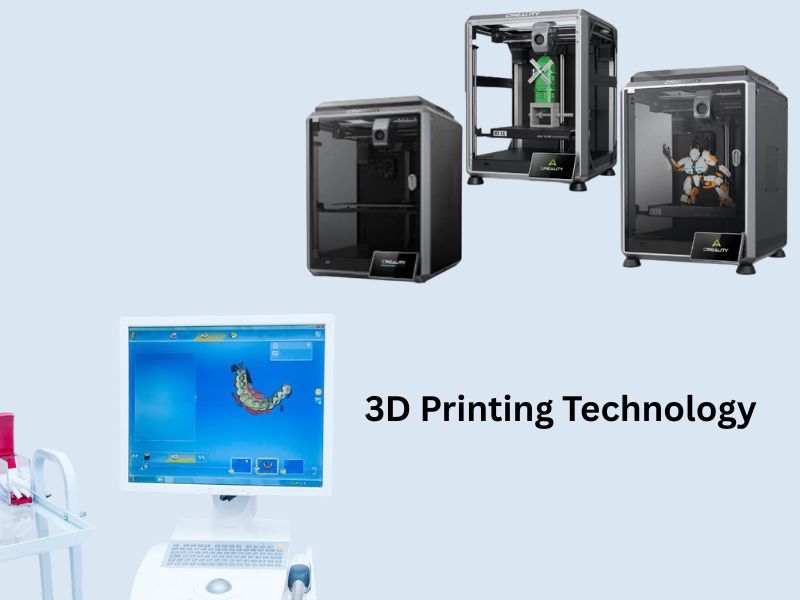Imagine printing a product just as easily as you print a document, but with layers of material forming a tangible, three-dimensional object. This is the power of 3D printing. You’ve probably heard of this groundbreaking technology, but you might still be wondering, How does 3D printing work? In this guide, we’ll unravel the mystery of 3D printing, exploring how it’s changing industries and why it’s considered a revolutionary force in manufacturing.
The simplicity of the concept is both remarkable and mind-boggling. From medical breakthroughs to creating custom gadgets, 3D printing allows businesses, hobbyists, and creators to bring ideas to life with speed and precision. But how does it work? Let’s break it down and discover how this amazing technology operates, and how choosing the best 3D printer for a small business can transform the way products are designed and made.

The Basics of 3D Printing Technology
What is 3D Printing?
At its core, 3D printing, also known as additive manufacturing, involves creating a physical object layer by layer from a digital design. Unlike traditional manufacturing methods, which often include subtracting material from a larger block, 3D printing builds up the object layer by layer, adding material in precise amounts to form the final piece. This process is controlled by a computer, which enables the creation of incredibly detailed and complex structures that are often impossible to achieve with traditional methods.
The 3D Printing Process: A Step-by-Step Overview
So, how does 3D printing work in practice? The process follows these basic steps:
- Designing the Object: The first step is to create a digital blueprint of the object using 3D design software. This file is usually made in a CAD (Computer-Aided Design) program. It can be a custom design or a model downloaded from online repositories, such as Thingiverse.
- Slicing the Design: Once the 3D design is ready, it’s converted into a series of thin horizontal layers. This is done using slicing software. The slicing software takes the 3D model and “slices” it into thousands of thin horizontal layers, each of which is printed individually. This slicing process helps the 3D printer understand how to build the object layer by layer.
- Printing the Object: With the design sliced, the printer is ready to start. The printer reads the sliced design file and begins depositing material layer by layer. The material could be anything from plastic filament, metal powder, to even food or biological material, depending on the type of 3D printer.
- Post-Processing: Once the object is printed, it may need some finishing work. This could include sanding, painting, or assembling parts, depending on the printer’s technology and the material used.
Types of 3D Printing Technologies
There’s no single type of 3D printing technology. Different methods exist to cater to various needs. Here’s an overview of the most common types:
Fused Deposition Modeling (FDM)
FDM is the most widely known and accessible form of 3D printing. It works by feeding a filament (typically PLA or ABS) through a heated nozzle, which extrudes the material in layers to form the object. FDM is popular for prototyping and small production runs, as it’s relatively cost-effective and easy to use.
Stereolithography (SLA)
SLA uses a laser to cure liquid resin layer by layer, building the object from the bottom up. This technology is renowned for its ability to produce objects with high precision and fine detail, making it ideal for jewelry, dental models, and highly detailed prototypes.
Selective Laser Sintering (SLS)
SLS uses a high-powered laser to fuse small particles of material (usually plastic, metal, or ceramic) into a solid structure. Unlike SLA, SLS doesn’t require support structures because the material is sintered inside a bed of powder. It’s excellent for creating durable, functional parts.
Digital Light Processing (DLP)
Similar to SLA, DLP also uses light to cure resin, but it projects an entire layer at once, making it faster than SLA. DLP is often used in the dental and jewelry industries for high-precision prototypes.
Multi Jet Fusion (MJF)
MJF uses a liquid binding agent and a fine powder to build objects layer by layer. The binder is selectively deposited to join the particles, and then the entire bed is fused with heat. MJF is known for producing highly durable parts quickly.
Here’s a clean and easy-to-read table based on the information in How Does 3D Printing Work?’
| Technology | How It Works | Best For | Key Features |
| Fused Deposition Modeling (FDM) | Feeds filament through a heated nozzle, building layer by layer. | Prototyping, small production runs | Cost-effective, easy to use |
| Stereolithography (SLA) | Uses a laser to cure liquid resin layer by layer. | Jewelry, dental models, detailed prototypes | High precision, fine detail |
| Selective Laser Sintering (SLS) | Fuses powdered material using a high-powered laser. | Durable, functional parts | No support structures needed |
| Digital Light Processing (DLP) | Projects an entire layer of light to cure resin at once. | Dental and jewelry industries | Faster than SLA, high-precision |
| Multi Jet Fusion (MJF) | Deposits a binding agent on powder, then fuses it with heat. | Rapid production of durable parts | Strong, high-quality outputs |

Materials Used in 3D Printing
The choice of material plays a crucial role in determining the quality, durability, and applications of 3D-printed objects. Let’s take a look at the most common materials:
Plastics
- PLA (Polylactic Acid): One of the most popular 3D printing materials, PLA is biodegradable, easy to print, and widely used for general-purpose prototypes.
- ABS (Acrylonitrile Butadiene Styrene): Stronger than PLA, ABS is ideal for functional prototypes and parts that require more strength and heat resistance.
- PETG (Polyethylene Terephthalate Glycol): PETG is a popular choice for durable, food-safe objects, known for its flexibility and impact resistance.
Metals
Metal 3D printing involves using powdered metals such as stainless steel, titanium, or aluminum. These metals are often used to create durable, high-performance parts in industries such as aerospace, automotive, and medical devices.
Resins
Used primarily in SLA and DLP 3D printing, resins are liquid materials that harden when exposed to light. They are perfect for producing highly detailed objects and are used in applications such as jewelry, dentistry, and miniatures.
Composites
Composites are materials that combine base materials, such as plastics, with fibers or particles, like carbon fiber or glass fibers. These are used to produce parts with enhanced strength and stiffness for industries like aerospace and automotive.
Applications of 3D Printing
The question “How does 3D printing work?” is not just a technical one; it’s also about understanding its incredible range of applications. Here are a few industries where 3D printing is making a real impact:
Healthcare
3D printing is revolutionizing the healthcare sector by enabling the creation of custom prosthetics, implants, and even 3D-printed organs. Surgeons can use 3D-printed models of patient anatomy for more precise surgeries, and the potential for organ bioprinting is incredibly promising.
Aerospace
In the aerospace industry, 3D printing is utilized to produce lightweight, durable parts that reduce fuel consumption and overall costs. It also allows manufacturers to design more complex structures that were previously impossible to produce.
Automotive
3D printing in the automotive industry is used for rapid prototyping, custom parts, and low-volume production. Companies like BMW and Ford are leveraging 3D printing to reduce development times and costs.
Consumer Goods
From shoes to eyewear, 3D printing allows brands to create customized, on-demand products. Personalized items are gaining traction, allowing consumers to have products tailored specifically to their needs and preferences.
Construction
3D printing is even making its mark in construction, where entire buildings and houses are being printed with materials like concrete. This has the potential to lower construction costs and reduce waste while allowing for more sustainable building practices.

Benefits of 3D Printing
Now that we’ve answered how 3D printing works, let’s examine why this technology has become such a game-changer:
Speed and Efficiency
3D printing enables faster production times compared to traditional methods. Designs can be prototyped quickly, and custom parts can be produced on demand, reducing time-to-market.
Cost-Effectiveness
By using only the material needed to create an object and eliminating the need for expensive molds or tooling, 3D printing helps cut costs, especially for low-volume production.
Customization and Personalization
Unlike traditional methods, 3D printing allows for mass customization. Companies can offer personalized products or create custom parts that fit individual customer requirements.
Design Flexibility
3D printing enables the production of intricate and complex designs that are often difficult or impossible to achieve with traditional manufacturing methods.

FAQs
What can 3D printing actually be used for?
Here are a few typical applications of 3D printing. 3D printing offers companies a low-risk, low-cost, and fast method of producing prototypes, enabling them to test a new product’s efficiency and accelerate development without the need for expensive models or proprietary tools. Taken a step further, companies across various industries utilize 3D printing for rapid manufacturing, enabling them to save costs when producing small batches or short runs of custom products.
Is 3D printing just for hobbyists or does it have real applications?
Demand for 3D printing now overwhelmingly favors industrial applications. In fact, Acumen Research and Consulting forecasts the global 3D printing market will swell to an impressive $41 billion by 2026. Clearly, this maturing technology promises to fundamentally redefine nearly every major industry, demanding machines like the VEHO PRO that deliver manufacturing scale, not just hobby capability.
How does a 3D printer actually work in simple terms?
A 3D printer reads a digital file, telling the machine precisely how to deposit material to construct the object. Consequently, the industry aptly refers to this process as additive manufacturing. Think of it this way: just as a paper printer lays down a single layer of ink to form an image, a 3D printer deposits or cures material layer upon layer, ultimately forming a complete, three-dimensional physical object.
Is 3D printing just melting plastic?
FDM (Fused Deposition Modeling) printers represent the most common method, but they are not the only choice. FDM machines release thermoplastic filaments, which a hot nozzle melts and deposits layer by layer to form the final object. However, the technology branches out: SLA (Stereolithography) printers, for instance, utilize a laser to cure liquid resin into hardened plastic shapes.
What do I actually need to start 3D printing?
To start 3D printing, beginners need a few key items. First, you’ll need a 3D printer, with FDM printers being great for newcomers. You’ll also need filament; PLA is a good choice for beginners. 3D modeling software, such as TinkerCAD or Fusion 360, is essential for creating designs, while slicing software, like Cura or PrusaSlicer, prepares models for printing. Some basic tools for post-processing, like pliers and sandpaper, are helpful. Lastly, you’ll need a computer to design models and control the printer.
What are the actual steps to 3D print something?
The process follows these steps:
- It all starts with a 3D model. You can opt to create one from scratch or download it from a 3D library.
- With your final design ready, the next essential step is preparing the file for your 3D printer, a process commonly referred to as slicing. Slicing software achieves this by meticulously dividing the digital 3D model into hundreds or thousands of ultra-thin, horizontal layers.
- The slicing software converts the information from the STL file into G-code, a specific code that contains precise instructions for the printer.
Conclusion
How does 3D printing work? It’s a dynamic, innovative process that is reshaping industries by allowing creators to make complex, customized objects with ease and speed. Whether you’re an engineer, artist, or business owner, 3D printing offers endless possibilities for bringing ideas to life. From creating prototypes to bold experiments, such as 3D Printing a Picture, the applications continue to expand. As this technology continues to evolve, its impact will only grow, making it an exciting field for both creators and entrepreneurs alike.

Comments are closed.